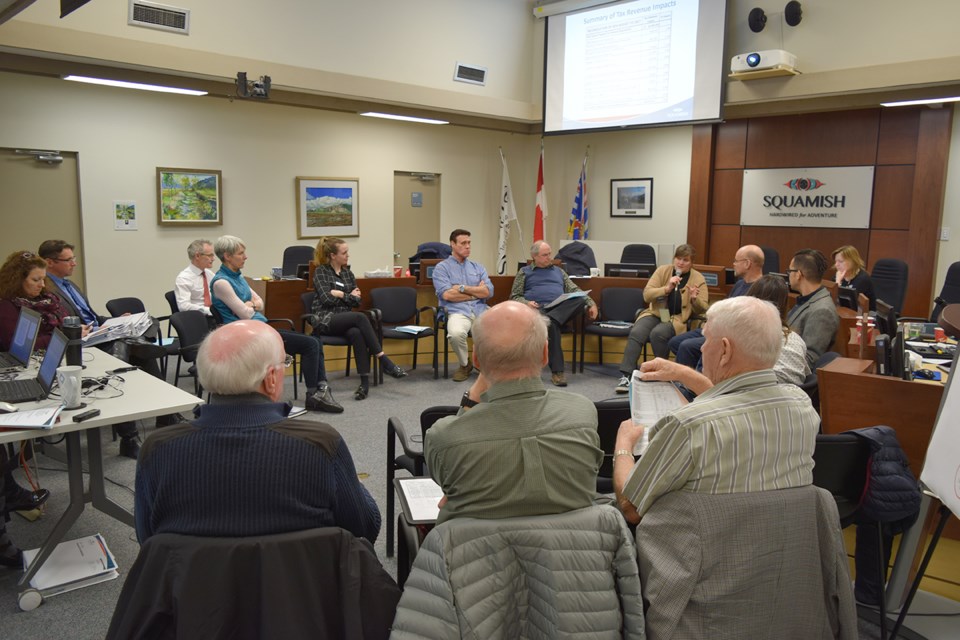We have a better idea of what the municipality plans to spend this year, but how that will impact homeowners’ bank accounts is still to be determined.
Council is proposing an almost $70-million budget for the District of Squamish in 2017, which is anticipated to result in an approximately five per cent bump in tax rates over last year.
The estimate is based on the preliminary BC Assessment information that the District has to date.
District staff presented highlights of the 2017-2021 draft financial plan at a public meeting Tuesday night to an audience of about 25 residents.
The operating side of the budget adds up to close to $42 million while the capital plan weighs in at near $28 million, according to Tanya Bastian, financial analyst for the District.
Some highlights in the draft budget for 2017 include $700,000 for active transportation, which means more separated bike lanes, commuter trails and the like; road reconstruction – meaning funds to fix some of the pavement issues around Squamish – is slated to get $800,000 in the draft budget; seismic upgrades to Garibaldi Highlands Fire Hall come in at $1.8 million, while a new ladder truck for the fire department rings in at $1.2 million. The district’s wayfinding program is earmarked to get $221,500 in 2017.
A total of $100,000 is for a new community park for the Dentville neighbourhood. A new ice resurfacer for the Brennan Park arena gets $175,000. The Smoke Bluffs parking lot will be expanded to the tune of $125,000 this year as well.
A $210,000 new sidewalk and trail maintenance machine is on the books for 2017.
The budget also has $13,700 in raises for council.
Some special projects planned for 2017 include the rewrite of the Official Community Plan, the Safe Routes to School program, an affordable housing contract, a storm water management plan, parking strategy implementation, a marine strategy as well as carbon neutral and greenhouse gas projects.
“That brings us to a 7.7 per cent increase over the 2016 general property tax revenue requirement, however after factoring in non-market growth, property tax revenue is anticipated to increase by roughly five per cent,” said Bastian.
This figure is just an estimate, as the district will not have the revised BC Assessment listing until March 31.
Individual homeowner’s property tax will vary, she said.
“We know the estimated impact on tax revenue requirements, given this is our current draft, but we don’t yet know what the changes will mean to taxpayers, especially on an individual basis,” Bastian said.
The percentage increase each class will absorb, such as what Squamish businesses will pay, has yet to be finalized, Bastian said.
In terms of utilities, homeowners will see a four per cent increase for their water fees.
“This is due mainly to water supply growth, system expansion and system maintenance,” said Bastian.
This will mean the water fee for a single-family home will be $416 in 2017.
The sewer fee sees an increase of two per cent, which is due to inflation. For the homeowner this means the sewer fee will total $558 this year.
The solid waste fee increases will vary leading to a bill of between $190 to $405 in 2017, depending on the size of garbage tote a homeowner chose.
The small tote fee didn’t increase over 2016, the medium tote fee increased by 10 per cent and the large tote increased by 15 per cent.
A big-ticket capital item for utilities is the vertical expansion of the Squamish landfill, which will cost close to $2.5 million in 2017.
The next council meeting regarding the budget is set for Feb. 14, at municipal hall.



